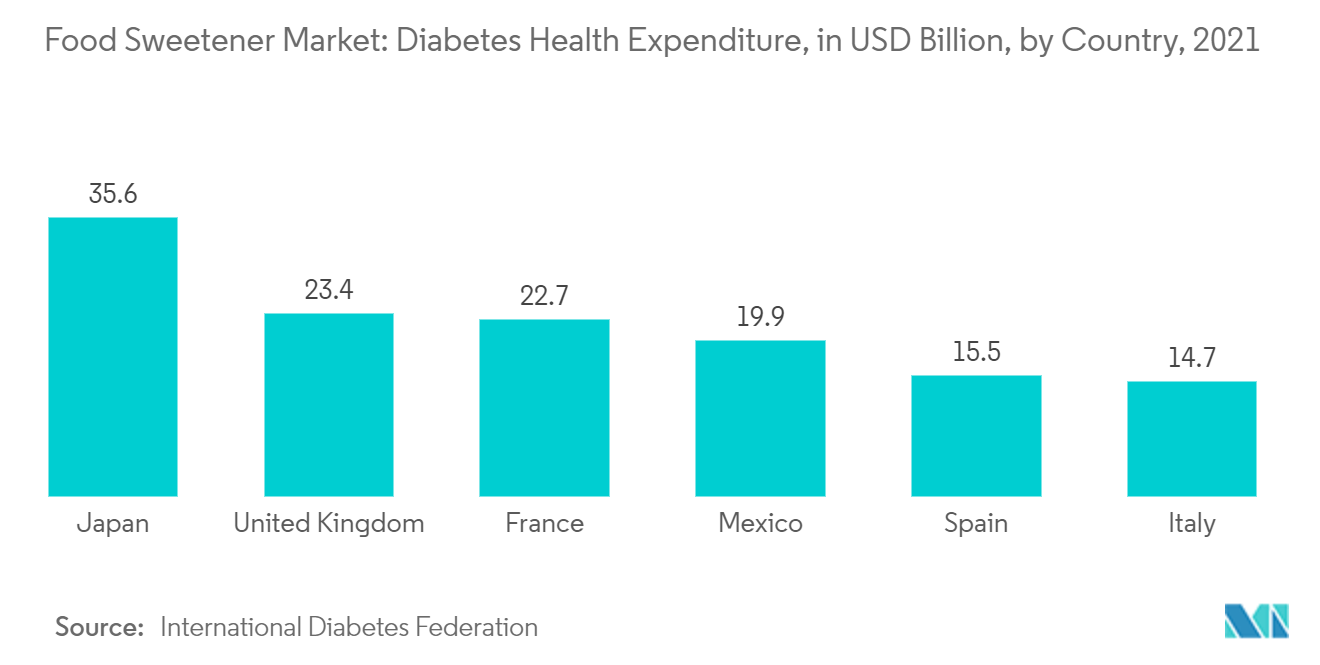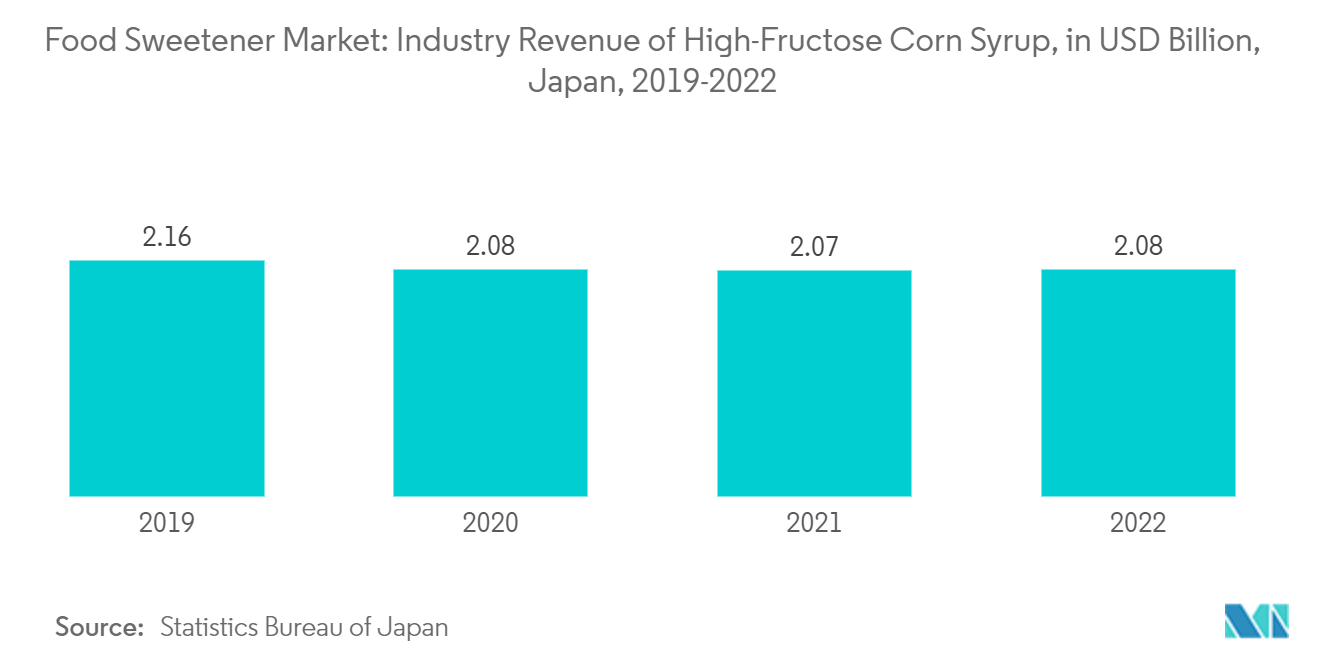Market Trends of Japan Food Sweetener Industry
Increasing Diabetic Population in the Country
- Due to increased health consciousness and desire for non/low-sugar chocolates/confectionery items, food sweeteners have gained commercial momentum in recent years. Obesity in adulthood is a significant risk factor that causes poor health and early death, including cardiovascular diseases, common cancers, diabetes, and osteoarthritis. As a result, people's preferences are gradually changing toward healthy low-carb, sugar-free diets.
- Diabetes is a significant health concern in Japan, and the elderly population is particularly vulnerable to developing the disease. According to the International Diabetes Federation (IDF), diabetes-related health expenditure in Japan was around USD 35.6 billion in 2021, which underscores the significant economic impact of the disease.
- The World Bank reports that approximately 6.6% of the population in Japan had diabetes in 2021, which is a significant number of people. One major dietary factor contributing to the disease is the high sugar content in many processed foods, which can contribute to obesity and increase the risk of developing diabetes.
- As a result, the demand for low-calorie sweeteners has been increasing in Japan as people look for alternatives to sugar that can help them manage their blood sugar levels and reduce their risk of developing diabetes. Low-calorie sweeteners, such as stevia and monk fruit extract, have become increasingly popular in Japan and are being used in a variety of food and beverage products as a sugar substitute.

High Fructose Corn Syrup Holds a Prominent Share in The Market
- Consumers have begun to place more value on food that offers them functional benefits apart from taste, increasing the demand for healthy, natural, and organic syrup and sweeteners. In addition, the rising trend of natural and organic products has boosted the demand for high fructose corn syrup (HFCS) in the country.
- There has been a growing demand for clean-label ingredients, with consumers becoming more conscious about what they consume and preferring quality over quantity. According to Food and Agriculture Organization Corporate Statistical (FAOSTAT) Database, the production of corn in Japan was approximately 166.5 tonnes in 2021.
- There has been a growing trend towards natural and organic food products in recent years as consumers become more health-conscious and concerned about the environmental impact of food production. Food processing companies are responding to this trend by incorporating natural and organic food ingredients into their products, such as using natural sweeteners like honey or stevia instead of artificial sweeteners or using natural preservatives instead of synthetic preservatives.
- In Japan, high fructose corn syrup is used extensively by food industries as it can be used in low dosages in beverages, hard candies, and cereals. For instance, the market shares of Coca-Cola and Pepsi declined drastically due to the use of aspartame. Thus, companies are extensively using high fructose corn syrup in their products. The above-mentioned factors have been propelling the market growth.

